The lychee fruit tree (Litchi chinensis), also called the Chinese litchi, is a member of the Sapindaceae family. It is also called fox, Chinese plum, liji or laysi. There is documentary evidence that such a plant was grown in China already in the second century BC. Today, such a plant is cultivated in all countries of Southeast Asia. Juan Gonzalez de Mendoza wrote that this fruit is similar to a plum, it does not burden the stomach, and it can be eaten in any volume, which is why he called such a plant "Chinese plum". This culture was brought to Europe by the French botanist Pierre Sonner, who traveled across China and Southeast Asia. It happened in the 18th century.
Lychee fruit is eaten canned or fresh, it is used to make jelly, ice cream and other desserts, and it is also used to make traditional Chinese wine.
Content
Lychee features
Lychee is an evergreen tree with a spreading crown. Such a tree, growing in natural conditions, can reach a height of 10-30 meters. The composition of complex pinnate leaf plates includes from 4 to 8 leaf plates of an elongated ovoid or lanceolate shape with a pointed tip. The front surface of the plates is dark green and shiny, and the wrong side is pale gray. Lush umbrella-shaped inflorescences reach 0.7 m in length, they consist of flowers that do not have petals, but consist only of cups of a pale yellow or light green color. The inflorescences include a large number of flowers, but no more than 15 ovaries of all develop into the fruits, while the rest die off. The length of the fruit, covered with a red skin, can vary from 25 to 40 mm, there are many sharp tubercles on the surface. Inside the fruit there is a jelly-like pulp of light color and sweet taste, it leaves the rind very easily and has a slightly perceptible wine flavor. In the center of the fruit there is a dark brown oval pit. In lychees growing in the tropics, fruit ripening is observed in May or June.
Growing lychee from a bone
In the middle latitudes, lychee is considered an outlandish plant; therefore, it is quite difficult to buy seedlings of such a culture in a garden pavilion. However, you can try to grow such a tree from a bone in indoor conditions. To do this, get a ripe fruit with a strong smell, translucent juicy pulp and red skin.The bone must be removed from the pulp, it is wrapped in moistened gauze or cloth. For 7 days, you need to ensure that the wrapper is slightly damp all the time.
The tissue must be removed from the swollen bone, after which it is planted in a pot, at the bottom of which there is a drainage hole. At the bottom of the pot, first you need to lay out a drainage layer of expanded clay, after which it is filled with flower soil mixture. It is only necessary to deepen the bone into the substrate by 20 mm. When planting several seeds, the chances that a seedling will appear increases several times. When the seed is planted, the substrate in the container must be moistened with lukewarm water. The seed should germinate at a temperature of 25 to 30 degrees, it is very important to ensure that the substrate in the pot is constantly slightly damp. The first seedlings should appear in about 7-30 days, but this may happen later.
After the first leaf plates of a light red color grow in the seedling that has appeared, the container must be rearranged on a sunny windowsill, while the plant must be protected from direct sunlight. A plant is transplanted into a larger pot during the formation of a 4 or 5 leaf plate. In order for the seedlings to develop normally, they will need a long day of light, at least 12 hours. The air temperature in the room throughout the year should not drop below 20 degrees.
Lychee care at home
How to water
Lychee is a tropical moisture-loving plant, in this regard, a young bush must be moistened twice a day from a sprayer with boiled or filtered water. The plant should be watered moderately and systematically, for this you need to use filtered or separated water for two days, while it should be at room temperature. Experienced flower growers advise using bottom watering, for this you need to regularly add water to the pan.
It is necessary to water the bush in such a way that it does not suffer from a lack or an excess of moisture in the root system. In this case, the room must constantly have high humidity.
Fertilizer
The first feeding of the lychee should be done 3 months after the seedling appears. After that, feeding is stopped until the tree is at least 1 year old. Starting from the second year of life, feeding is carried out 1 or 2 times in 4 weeks, for this, a solution of complex mineral fertilizers is used in moderate concentration. Organic fertilizers can also be used to feed lychee, for example, a mullein solution (1:15) is well suited. Thanks to top dressing, the formation of buds is improved, and the bush is also stimulated to bear fruit.
Pruning
Such a plant is slow-growing, so it needs to be cut very rarely. During the first 2 years, you need to deal with the formation of the crown of the plant. After that, the shape needs only to be maintained, for this by systematically shortening the excessively long stems. If a lot of time has passed, and there are still no fruits on the tree, then you should not be upset, because such an exotic tree is still quite rare.
Diseases
Lychee has a fairly high resistance to disease. A tree can only get sick if it is not properly looked after. If you water the bush too abundantly, then rot may appear on the root system. If the plant does not have enough water, it will become lethargic and wither. By providing the lychee with proper care, you can protect it from all diseases.
Pests
Such a crop is also highly resistant to pests. However, spider mites, whiteflies, mealybugs, aphids, thrips or scale insects can move to the bush from other indoor flowers.In this regard, the plant needs a systematic thorough examination, if pests or signs of their presence are noticed on it, then try to start their destruction immediately. To do this, the affected plant must be sprayed with acaricide or insecticide, while the solution must be prepared in accordance with the instructions on the package.
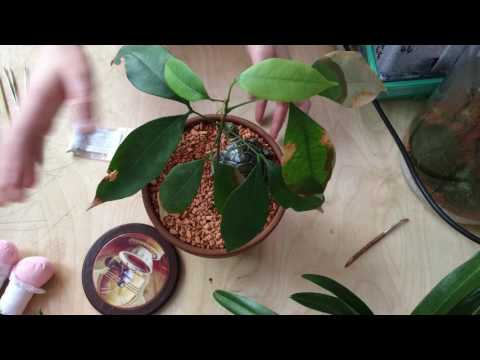

Watch this video on YouTube
Types and varieties of lychee
A fairly large number of varieties and hybrids of lychee have been bred, but such a plant is widespread only in Asia. The most popular are the following cultivars:
- Green dangling... The tree is covered with leafy plates of a pale green color. On the surface of the fruit there is a barely distinguishable green strip. The fruits remain fresh and do not lose their taste even three days after the peel is removed from them.
- Sticky rice balls... The dense flesh of these fruits has a sweet honey taste. They are covered with a red skin, on which there are no tubercles. The stone of such fruits is much smaller in comparison with other varieties, or there is none at all.
- Sweet osmanthus... Sweet fruits have osmanthus aroma. They are covered with a very bumpy skin of a rich red color.
- Green Yatu... There is a dark green speck on the peel of the fruit.
- Black leaf... This variety is early maturing. Fruits are fleshy, they are covered with a rind that secretes juice, similar to red ink.
- May red... This variety is the earliest. Fruits are harvested already in May.
- Concubine smile... This variety is very ancient and early maturing. The fruit and the peel with which they are covered give off a red juice.
Lychee fruit properties: harm and benefit
Beneficial features
The composition of lychee fruits includes many substances that are beneficial to the human body, for example: vitamins E, K, C, H, PP and group B (B1, B3, B6), magnesium, sodium, phosphorus, iodine, manganese, zinc, selenium, iron, calcium, potassium, pectins and organic acids. In oriental medicine, such fruits are used in order to normalize sugar levels in diabetes mellitus, improve the activity of the liver, kidneys and lungs, and they also help in the treatment and prevention of atherosclerosis. In case of cardiovascular diseases, it is also recommended to eat lychee, because the pulp of the fruit contains potassium. They are also very useful for high blood cholesterol levels, anemia, intestinal disorders and pancreatic diseases. Such fruits are considered in Hindu medicine to be an aphrodisiac that improves male strength and sex drive.


Watch this video on YouTube
Contraindications
Lychee fruits are contraindicated only for those who have an individual intolerance. There are no other contraindications for such fruits. However, stale fruits that have a dark skin should not be eaten, because they can cause intestinal upset.

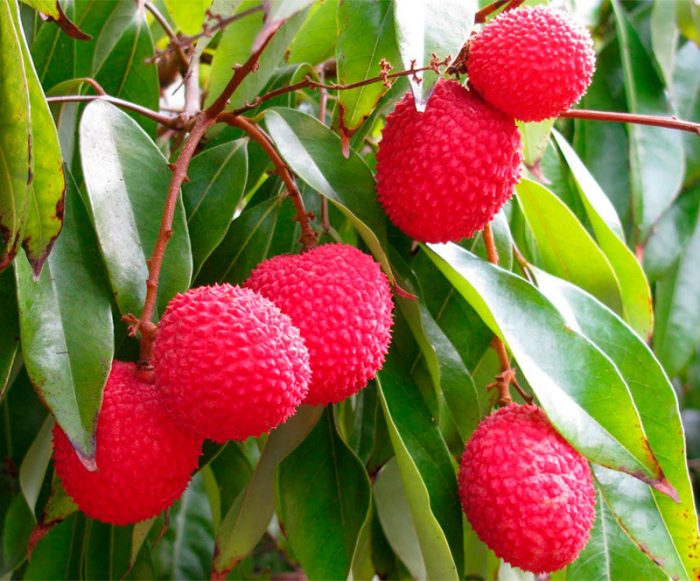
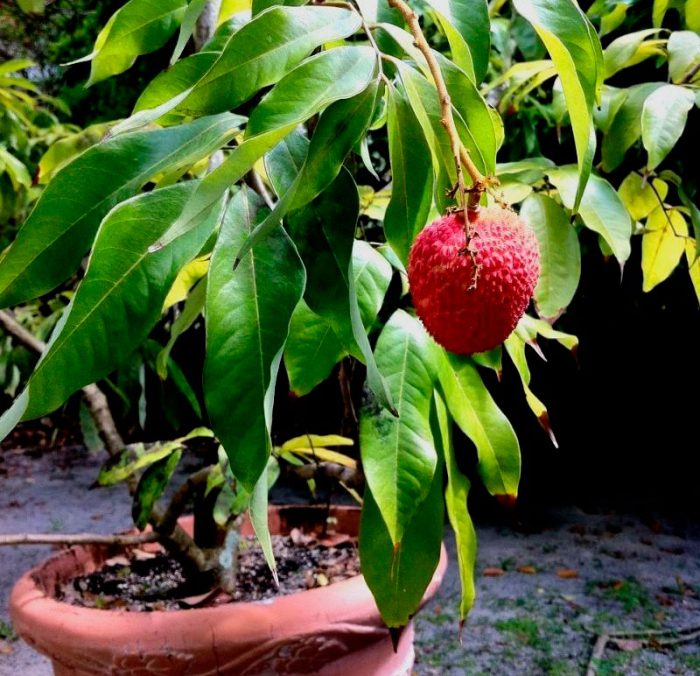
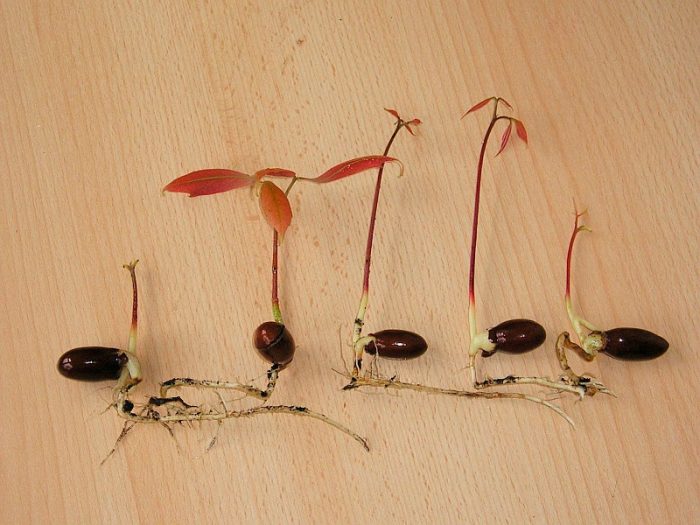
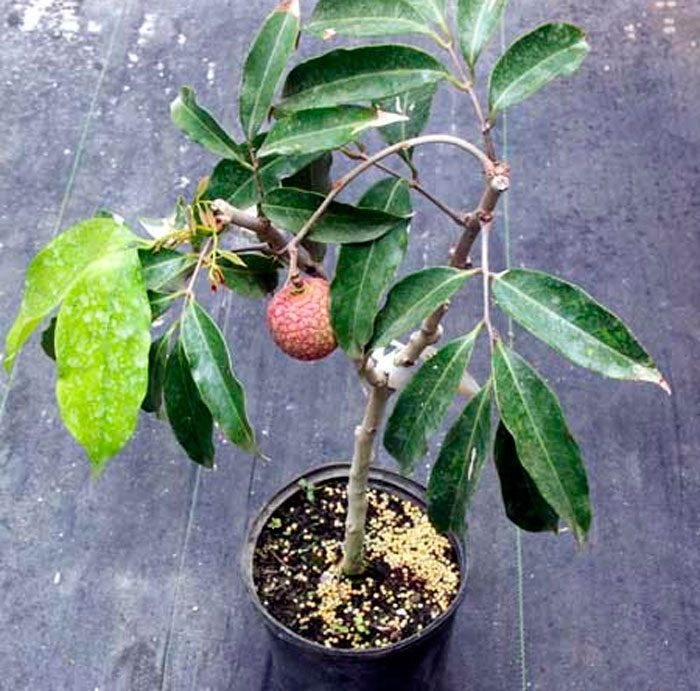
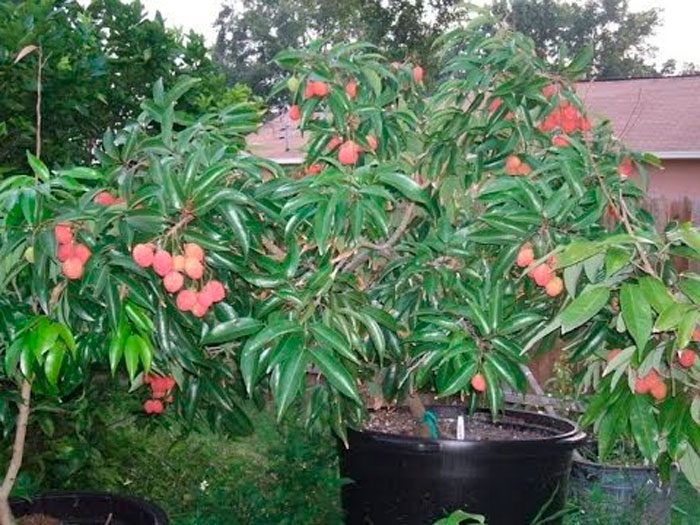
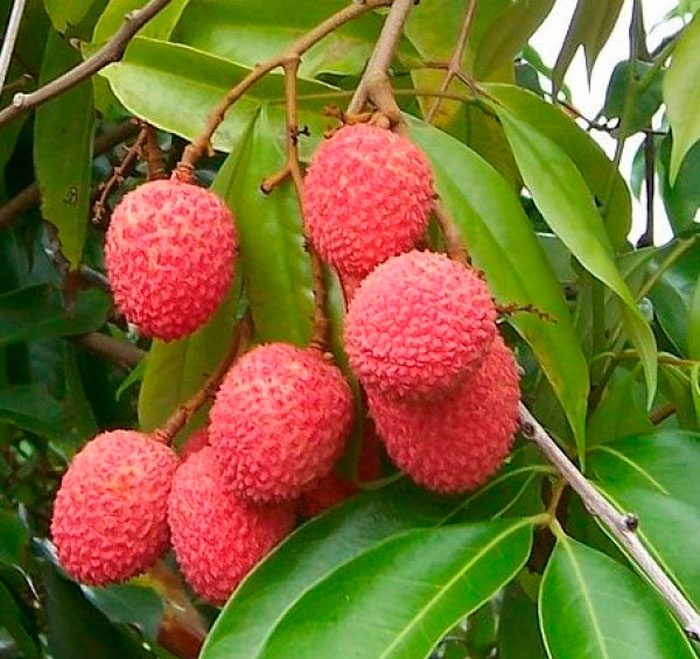

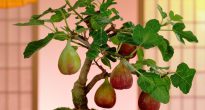


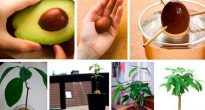

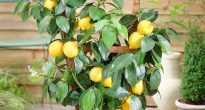
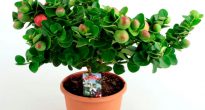
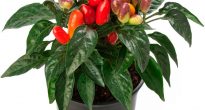


planted this year from a bone. It is developing well. I will wait for the result
where to get the bone?
Buy a kilogram of lychee in the store and, worst of all, eat the fruits, but you don't need bones) Here you go. What do you think, fly to South Africa for a bone?
It is better to buy a cutting from a tree that has borne fruit, then your tree will also bear fruit. Look at the website of the Agronov company, they have high-quality planting material. There is no defect in the product.